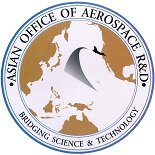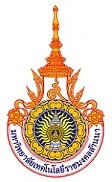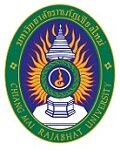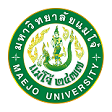Presentation Instruction
The 5th International Joint Conference on Natural Language Processing, organized by the Asian Federation of Natural Language Processing will take place at the Shangri-La Hotel, a Chiang Mai luxury hotel conveniently located within the bustling centre of this culturally rich city, with 281 finely appointed rooms and suites located on Chang Klan Road, which is within easy walking distance of the city's famous Chiang Mai Night Bazaar and further to the relaxing Mae Ping River.Lecture Presentation
These presentation instructions are applicable for all oral sessions in IJCNLP Main Conference, Workshops, and Tutorials.Equipment
Each presentation room is equipped with a laptop computer, a data projector, a microphone, a lectern, and a pointing device. You are strongly recommended to use the laptops provided by the conference. Identical laptops with the same specifications are also available in the Speaker Ready Room. You can check if your slides can be displayed properly in the Speaker Ready Room. The laptops are equipped with:
- Windows 7
- Wireless LAN connection, USB port, DVD player
- Microsoft Office 2010
- Adobe Reader, Flash Player, Media Players (Microsoft/Real/QuickTime)
- Anti-Virus software
Presentation
Please notify the session chair of your presence and upload your slides to the laptop in your presentation room at least 15 minutes before the start of the session. A 20 minute talk time plus 5 minutes question answering are allocated for each main conference full paper, while 12 plus 3 minutes are given per main conference short oral presentation paper. The allocated presentation time for the IJCNLP main conference, workshops, collocated events, and tutorials may differ. Please check the conference web site for the exact time allocation for your presentation. Please rehearse your presentation and ensure it falls within the time limit. Make sure each of your key points is easy to explain with aid of the material on your slides. Do not read directly from the slide during your presentation. You should not need to prepare a written speech, although it is often a good idea to prepare the opening and closing sentences in advance.
Venue & Timetable
All technical sessions are held in Shangri-La Hotel Conference Center. You may check the assigned presentation room and the session timetable at the conference web site for updates.
Poster Presentation
These presentation instructions are applicable for posters in IJCNLP2011 Conference Posters sessions, and Software Demonstrations.
Equipment
For posters, we will provide display board measuring 100cm in width and 200cm in height. This size is good for a standard A0 poster in the portrait orientation. The mounting items such as pins and tapes will be provided. However, no tables will be available except for Software Demonstrations. Your poster is only displayed during your poster session. Please take down your poster at the end of your session.
For software demonstrations, we will provide a table, an electric outlet (220/230 V), a poster board at the same size, 100cm x 200cm.
Presentation
A paper presented as a poster offers a unique opportunity to present a research work in a way customized to individual or a small group of people. It is more interactive than an oral presentation. Therefore, the work can be presented, from certain aspects, more effectively to a small but well-targeted audience. Remember people attracted by a poster are so interested in the work that they are willing to invest anywhere from 5 to 10 minutes of their time.
To attract the audience who would be interested in your work, the poster should have a title in large font which is highly visible to even passers-by. Its contents also need fonts large enough to be readable from 1 to 2 meters away. Highlight the pages of your paper in the proceedings so people can locate it easily. As to its layout, it may not be a good idea to simply create a few slides and patch them together like an enlarged handout of an oral presentation. Instead, a poster allows you to arrange things anywhere you want. For example, the system diagram can be in the center, surrounded by descriptions and performance tables of its individual components. So take advantage of this flexibility.
"A picture is worth a thousand words". Try to choose visual aids like figures, diagrams, cartoons, colors, even lines over texts on your poster to show the research idea and the logic flow of the contents. Thus after attracting people with a nice title, the poster can be self-explaining so that people can understand it and quickly find out whether they have more questions to ask. If they do, they will have a small discussion with you to get the most out of your poster presentation. In addition, some people are more verbal than visual. They prefer to listen instead of to read even the visualization is great. So, prepare "mini-talks" as short as 30 seconds, and some as long as 5 minutes. Kindly ask the people (who might be reading the poster apparently slowly) whether they would like a brief introduction from you.
Similar as delivering an oral presentation, bear your audience's background in mind. Seasoned researchers probably need only a few key points while more general information would help those not so familiar with your task. If you find it will otherwise take long to talk with a highly interested person, try to wrap up politely so you can talk to other people who are waiting. Occasionally, people prepare some print-outs to complement their posters. If you expect such print-outs to be helpful, by all means prepare them.
The respective poster sessions scheduled will be announced in the conference website. You surely will be attending other posters. To avoid leaving your poster without a presenter (in such case it will attracts less people than it deserves), try to have your co-author or colleague cover you if possible.















